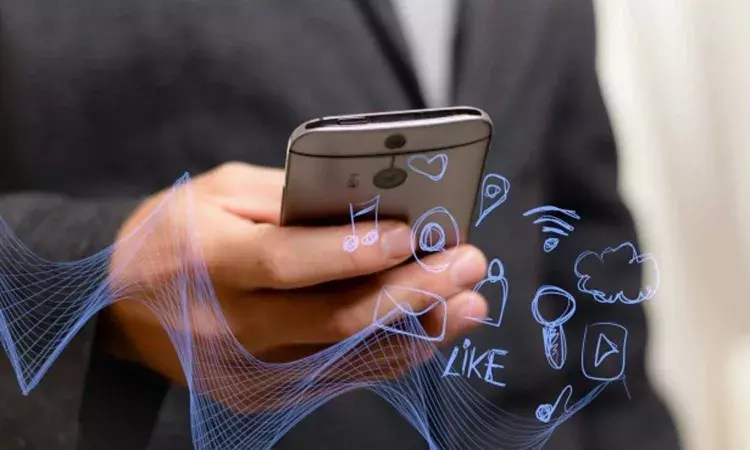- Home
- Medical news & Guidelines
- Anesthesiology
- Cardiology and CTVS
- Critical Care
- Dentistry
- Dermatology
- Diabetes and Endocrinology
- ENT
- Gastroenterology
- Medicine
- Nephrology
- Neurology
- Obstretics-Gynaecology
- Oncology
- Ophthalmology
- Orthopaedics
- Pediatrics-Neonatology
- Psychiatry
- Pulmonology
- Radiology
- Surgery
- Urology
- Laboratory Medicine
- Diet
- Nursing
- Paramedical
- Physiotherapy
- Health news
- Fact Check
- Bone Health Fact Check
- Brain Health Fact Check
- Cancer Related Fact Check
- Child Care Fact Check
- Dental and oral health fact check
- Diabetes and metabolic health fact check
- Diet and Nutrition Fact Check
- Eye and ENT Care Fact Check
- Fitness fact check
- Gut health fact check
- Heart health fact check
- Kidney health fact check
- Medical education fact check
- Men's health fact check
- Respiratory fact check
- Skin and hair care fact check
- Vaccine and Immunization fact check
- Women's health fact check
- AYUSH
- State News
- Andaman and Nicobar Islands
- Andhra Pradesh
- Arunachal Pradesh
- Assam
- Bihar
- Chandigarh
- Chattisgarh
- Dadra and Nagar Haveli
- Daman and Diu
- Delhi
- Goa
- Gujarat
- Haryana
- Himachal Pradesh
- Jammu & Kashmir
- Jharkhand
- Karnataka
- Kerala
- Ladakh
- Lakshadweep
- Madhya Pradesh
- Maharashtra
- Manipur
- Meghalaya
- Mizoram
- Nagaland
- Odisha
- Puducherry
- Punjab
- Rajasthan
- Sikkim
- Tamil Nadu
- Telangana
- Tripura
- Uttar Pradesh
- Uttrakhand
- West Bengal
- Medical Education
- Industry
Smartphone use may not interfere with working of Electronic Apex Locator: Study

According to recent research, investigators have found that smartphones can be used without the fear of electromagnetic radiation interference to the EAL during working length determination, as quoted in the Journal of Operative Dentistry and Endodontics.
The electronic apex locator (EAL) acts as an aid in determining the working length accurately and precisely when doing a root canal treatment. Electronic apex locators help reduce the treatment time and the radiation dose, while the radiographic method aids in diagnosing the root canal anatomy.
On the other hand, the amount of electromagnetic radiation emitted from a digital smartphone is estimated to be low, which is around 42 V/m at 0.1 m dropping to below 7 V/m at 1 m in the standby mode. So, when medical equipment is used in the vicinity of a smartphone, two things must be taken into consideration; one is the amount of electromagnetic radiation they produce and the other is the safe distance at which the equipment should be placed. The EAL is contraindicated in patients with pacemakers due to electromagnetic interference.
Likewise, one of the major concerns regarding an EAL is the inaccuracy caused by the electromagnetic interference due to the usage of smartphones in the ambiance.24 To prevent electromagnetic interference from a smartphone, various measures like using it in nonpatient area, restriction in the clinical area, and using it at a distance of more than 1 m from the medical equipment is preferred.
Hence, Cruz Nishanthine and associates at the Department of Conservative Dentistry and Endodontics, Sri Venkateswara Dental College and Hospital, Chennai, Tamil Nadu, India, considered it essential to determine the reliability of the electronic apex locator (EAL), in the presence and absence of a smartphone during working length determination.
The authors included thirty patients requiring root canal treatment in this study. The working length was measured. Two smartphones were used in this study, an Apple iPhone 6s and a Samsung S7. For each canal, electronic working length was determined using a no 15 K-file under three different criteria: no smartphone was placed next to the EAL; an iPhone 6s with activated Wi-Fi, Bluetooth, and calling mode was placed next to the EAL, and Samsung S7 with activated Wi-Fi, Bluetooth, and calling mode was placed next to the EAL during the working length determination. Working length was determined thrice for each canal following all the three criteria and an average of the three values was considered as the final value for each criterion.
The authors observed that there was no significant difference for electronic working length measurement in the presence or absence of smartphones used.
Hence, they concluded that "smartphones can be used in the vicinity without the fear of electromagnetic radiation interference with the EAL during the working length determination."
Dr. Nandita Mohan is a practicing pediatric dentist with more than 5 years of clinical work experience. Along with this, she is equally interested in keeping herself up to date about the latest developments in the field of medicine and dentistry which is the driving force for her to be in association with Medical Dialogues. She also has her name attached with many publications; both national and international. She has pursued her BDS from Rajiv Gandhi University of Health Sciences, Bangalore and later went to enter her dream specialty (MDS) in the Department of Pedodontics and Preventive Dentistry from Pt. B.D. Sharma University of Health Sciences. Through all the years of experience, her core interest in learning something new has never stopped. She can be contacted at editorial@medicaldialogues.in. Contact no. 011-43720751
Dr Kamal Kant Kohli-MBBS, DTCD- a chest specialist with more than 30 years of practice and a flair for writing clinical articles, Dr Kamal Kant Kohli joined Medical Dialogues as a Chief Editor of Medical News. Besides writing articles, as an editor, he proofreads and verifies all the medical content published on Medical Dialogues including those coming from journals, studies,medical conferences,guidelines etc. Email: drkohli@medicaldialogues.in. Contact no. 011-43720751


